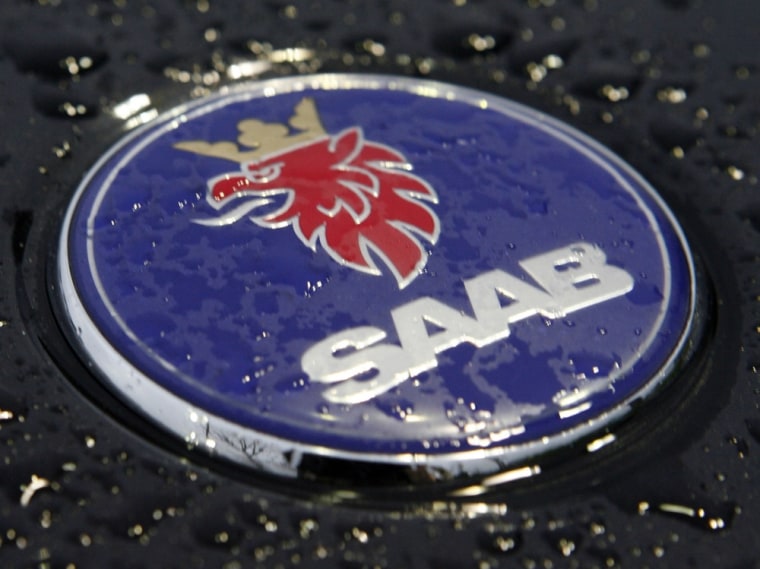Barring yet another last-minute hitch, cash-starved Swedish automaker Saab should have a new partner — and as much as $170 million in cash coming from its deal with Chinese auto retailer Pangda.
News of the alliance emerged just days after another tie-up between Saab and China’s Hawtai Motors collapsed unexpectedly, raising growing concerns about the European carmaker’s survival. Indeed, analysts and customers alike have been asking whether Saab can pull itself back from the brink for several years, and despite the carmaker’s optimistic statements, the Pangda partnership doesn’t mean the skeptics are going away.
“Will this be enough to get them on sound financial footings? I’m just not sure,” said Joe Phillippi, a longtime Wall Street investment analyst and now head of AutoTrends Consulting.
Saab’s future has been uncertain since even before its former parent General Motors decided to either sell or close the brand nearly three years ago.
Suffering years of declining sales and worsening losses, GM began “winding down” the Swedish subsidiary in late 2009, and by the time the Dutch firm Spyker Cars negotiated a purchase, early in 2010, Saab was effectively insolvent. It took seven weeks after the sale for the new owners to get the headquarters assembly plant, in Trollhattan, running again.
Spyker Chairman and Acting CEO Victor Muller insists that shutdown was the proverbial monkey wrench that led sales and income to fall short of plans last year. Whatever the reason, Saab was struggling to pay bills, and by the end of March a key supplier demanded payment before delivering essential parts. Muller decided to “call their bluff,” and in retrospect now admits he triggered the disaster that would follow, that one supplier being joined by dozens of others boycotting the Saab factory.
With its plants closed and creditors circling, Saab started a frantic search for cash.
Among other proposals, it turned to Vladimir Antonov, a Russian banker and one-time investor in Spyker. Antonov offered a lease-back deal where he would buy Saab's plants and other assets, then lease them back to Saab, an approach that would have provided the Swedish carmaker a quick cash infusion. The deal won the backing of the Swedish government but has been blocked by the European Investment Bank, which provided the initial loan Spyker used to acquire Saab from GM.
With time running out, Dutch entrepreneur Muller turned to China. He had plenty of reasons. For one thing, that nation’s domestic carmakers had long hoped to gain traction by expanding into Europe and North America — even as Saab desperately needed access to China, today the world’s largest automotive market.
The Hawtai deal, Muller proclaimed earlier this month, was “the best available.” Almost immediately, it would have generated more than $100 million in desperately needed cash. It also would have opened access to Chinese distribution, and Saab hoped eventually to start building some of its products on Hawtai assembly lines. (The deal was similar in concept to the sale of the other Swedish automaker, Volvo, to China’s Geely last year.)
Why the Hawtai deal quickly unwound is a matter of debate. Some reports claim the carmaker couldn’t get the approval of Chinese bureaucrats. A similar roadblock scuttled the proposed 2009 sale of GM’s Hummer brand to a small Chinese automaker. But Muller has also hinted that Hawtai may have tried to change the terms of their agreement after the Saab deal was signed.
“It’s not uncommon that the real negotiations often begin after the contract is signed for the Chinese,” said one industry source who has spent several decades dealing with the Asian nation and who asked not to be identified by name.
Whatever the actual reason, Saab had to move fast. But even before it lined up the aborted Hawtai deal, Muller had already been negotiating with other Chinese makers, and he was able to find another partner faster than anticipated.
The new Pangda alliance, he said, “will secure Saab automobile’s medium-term funding,” and give it an immediate outlet through the 1,100 dealers operated by the Chinese firm. Pangda is one of China’s 200 largest enterprises. The company completed an IPO just three weeks ago, raising $1 billion. It will now spend some of that money on a 24 percent stake in Saab.
But will the latest partnership hold?
“We’ve seen how fast these rescue deals can fall apart,” warned Dave Sullivan, of AutoPacific, Inc. “Everyone is going to be cautious, and rightfully so.”
Sullivan also stresses that while Saab may be able to pay off past-due parts bills, its vendors will likely drive a tougher bargain on future deliveries, even demanding cash up front, something that will be difficult for Saab to do; the carmaker hasn’t been producing cars to sell since March 29.
There are buyers to deal with too. Saab’s problems have been in the headlines for months, so potential customers “are going to be skeptical before spending $50,000 on a Saab 9-5,” Sullivan noted. Consumers want to know that the company they buy from today will be there to back them up with service and parts for years to come, he said.
The good news is that Saab has been getting solid reviews for the 9-5 and the new 9-4X — its first crossover-utility vehicle. Saab buyers have always been a bit of a different breed, looking for something out of the mainstream, noted Phillippi. So Saab customers are possibly more willing to take a risk and stay loyal to the automaker.
At least Saab has to hope so. If the deal with Pangda holds, Saab will have some cash to deal with its most immediate problems, but the carmaker will likely take time before things can get anywhere close to what might be described as normal again.
